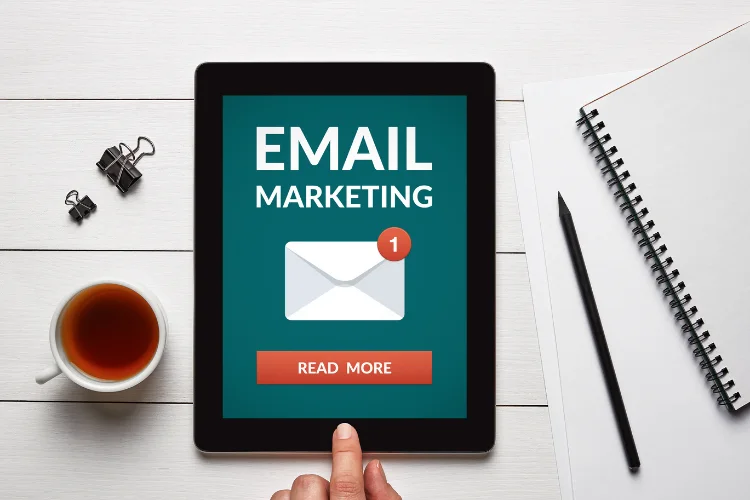Post-purchase emails are an incredibly effective, but often underutilized, marketing tactic to connect with your customers. They can be a tool to help your customers learn more about your product protection plans and get them to return to the site to make an additional purchase within the all-important 30-day window.
Product protection plans can improve customer satisfaction and strengthen their relationship with your brand after they’ve made a purchase. Not all insurance providers allow a 30-day window that makes post-purchase offers possible. Be sure to partner with a product protection plan provider that offers post-purchase options to get the benefits for your brand.
During a holiday season where retail sales are high, offering product protection in post-purchase emails allows you to nurture newly acquired customers and potentially shorten their repeat purchase cycle
One way to easily add product protection plans into your existing flow is by including offers in your post-purchase email cadence.
Advantages of offering protection post-purchase
During a holiday season where retail sales are high, offering product protection in post-purchase emails allows you to nurture newly acquired customers and potentially shorten their repeat purchase cycle.
There are several reasons why offering protection plans to customers post-purchase is an excellent option.
Low technical lift
Adding plan options post-purchase is as simple as incorporating offers into existing automated email campaigns. It’s an easy option to add value that doesn’t require making site changes. This is especially beneficial if you want to capture the benefits of extended warranties for holidays but are in a code freeze that prevents site changes to the Product Detail Page or to the Cart.
Consider a customer who purchases a $80 coffee maker as a holiday gift. After they've completed their shopping, they receive an email offering them the option to add protection to the product. They are able to take advantage of this benefit after their holiday shopping rush in a way that doesn’t change their on-site shopping experience.
Customer journey timing
The timing of this offer guarantees that there is no risk to site conversion. After the purchase is made, the customer expects several transaction-related emails to follow. This means that an offer related to their recent purchase fits directly into their existing ecommerce customer journey. Additionally, customers have more time post-purchase to carefully consider whether they wish to protect their item with a product protection plan.
Think of a customer who purchases a $400 tent from REI, and in a subsequent email they are given the offer to instantly add a 5-year protection plan. As they’re anticipating their product arriving, reminder emails allow them to think about the uses they have for the tent. They decide they want to extend the lifetime of their product by adding a protection plan.
Useful value-add
Product protection offers included in triggered emails are a useful reminder of an offer that adds value to the product just purchased. A customer who has already made a purchase trusts the retailer and the post-purchase emails to be helpful to them.
Consider a customer who purchases a new $1,500 sofa to replace one that their dog chewed. By being reminded of the availability of product protection plans post-purchase, the customer can insure themselves against having to buy another sofa if theirs is destroyed again by a pet in the future.
Highly relevant
Customers look for emails post-purchase to get critical order and shipping update information, making for a great opportunity to promote upsells and add-ons to increase AOV. Physical products recommended as add-ons can sometimes be met with disinterest due to cost or lack of relevance. Alternatively, a product protection plan add-on is electronically delivered, and can be highly relevant and valuable for the product they’ve already purchased.
Consider a customer who purchases a $150 leaf blower. The retailer can offer them an extra battery for $50. But it might not feel like an immediate need for the customer, and may feel like a high cost to add, which affects the relevance of timing and cost relative to the purchase. On the other hand, offering a $15 protection plan is a potentially easier sell. It’s extremely relevant to the purchase they made, provides immediate value, and doesn’t come at an extravagant cost.
Ways to offer protection post-purchase
The best way to incorporate protection plan offers is to integrate them into already scheduled post-purchase automated emails. Post-purchase email offers can be incredibly effective because the user is expecting and looking for emails related to the purchase they made—typically, these emails have higher open and click rates than marketing blast campaigns. And since they’re already scheduled campaigns that run automatically, there’s just a one-time lift to insert the offer into each campaign.
Many protection plans can be attached to a product within a 30 day window following the purchase. This is why inserting protection offers into already-scheduled campaigns is so effective - most of these emails all are triggered to send within the first 21 days post-purchase.
You can make it easy for customers to add a plan by including a reminder in each of the crucial emails. A dynamic timing reminder can count down from the date of purchase to notify customers, “You have X days remaining to add a protection plan on your purchase”.
Within the emails, data identifies which items are eligible for a warranty and how many days the customer has remaining in their 30 day purchase window. Customers can easily click to add a plan to that product from the email. and gives customers the option to add directly from the email.
Post-purchase email types
There are several types of automated email campaigns that can serve as great places for protection plan offers. Each of these have their own opportunity and strategy in including protection plan offers within them.
These include:
Transactional emails
These are the triggered emails that follow a purchase that a customer expects to receive to update them on the status of their purchase or to request product and/or CSAT feedback.
Transactional emails typically include the following:
- Order confirmation
- Shipping confirmation
- Delivery confirmation
- Ratings and reviews solicitations (there are often multiple of these, spaced a week apart).
Transactional emails are the best place to insert a protection plan offer because they are the most relevant to the purchase, and 100% of customers get them, regardless of their marketing campaign subscription status.
New subscriber email
Another option to include protection plan offers is in the emails that go out as part of the welcome flow for your new subscribers who are auto-opted into your marketing emails at time of purchase.
Triggered email campaign
A final option for including protection plan emails is to add a new triggered email campaign solely focused on promoting product protection plan add-ons. These emails allow data on purchase timing to trigger an email to send, and they enable a richer, more personalized customer experience vs. insertion into transactional campaigns. This sort of triggered campaign can also be scheduled to be re-sent at multiple intervals within the 30 day window.
Drive revenue by selling product protection post-purchase
If you want to get the benefits of protection plan offerings on your products, consider post-purchase for an easy addition. Post-purchase emails are a great way to get the benefits of product protection sales in a way that has low-technical lift, fits into the customer journey, provides a useful value-add, and is highly relevant to the customer.
Some product protection plan providers like Mulberry Technology enable you to estimate your calculate extended warranty revenue to see what revenue benefit your business will receive from adding warranties. Start getting the benefits today by adding protection plans onto your post-purchase emails.





